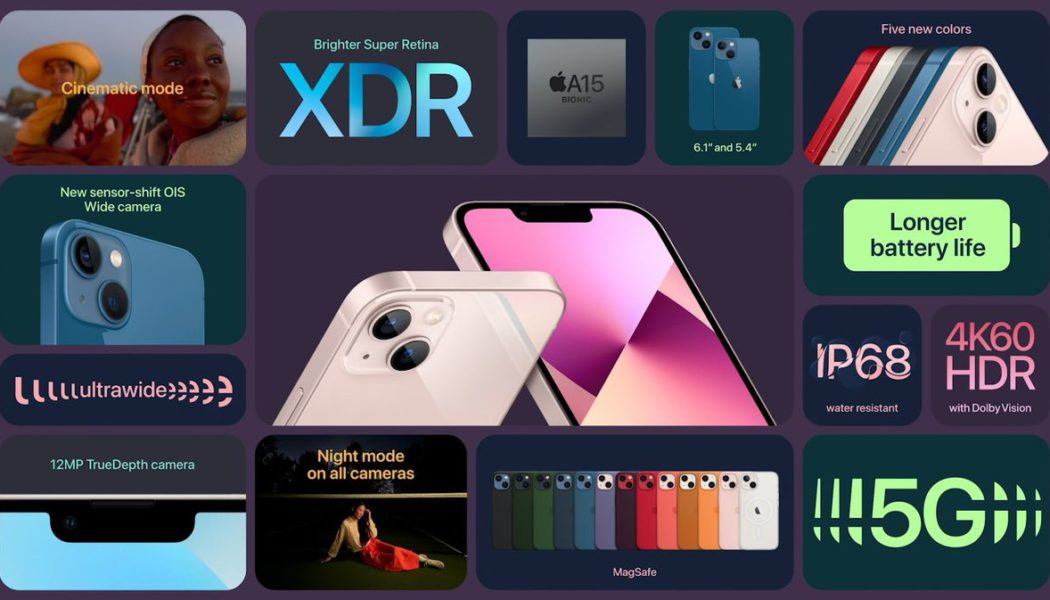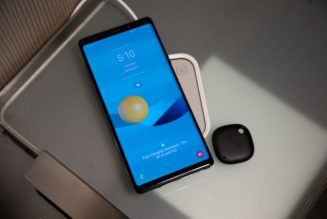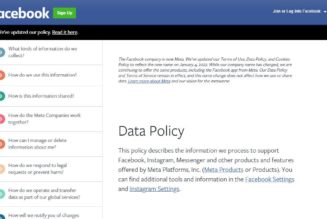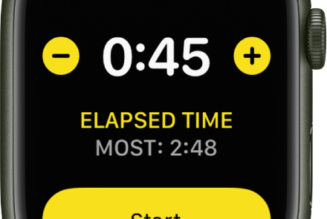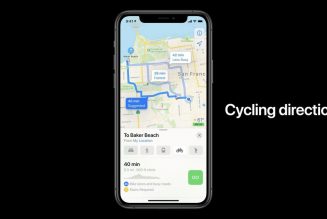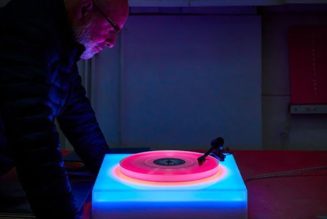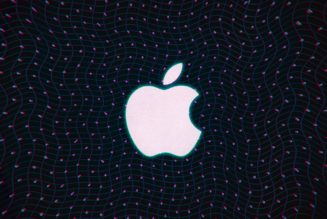For the past ten years, Tim Cook’s greatest accomplishment as Apple CEO has been vastly more of the same. More iPhones, more iPhone accessories, more apps, and so much more money. While the Mac and iPad have occasionally fallen into disrepair, the company keeps coming back with new reasons to buy its greatest hits every year — and this year’s iPhone 13 event is a near-perfect case study in how far refinement can take you.
As my colleague Jon Porter points out, the iPhone 13 is effectively the iPhone 12S, an iterative, incremental update to last year’s phones instead of something that feels brand new.
But oh, what an update. What company wouldn’t dream of being able to say they improved the processing power AND the battery life AND the cameras AND the displays AND the storage capacity AND the connectivity AND the design in the course of a single year, all without changing the price one bit?
In 2021, the same $829 you’d pay last year now buys you twice the storage, a whopping 2.5 additional hours of quoted battery life, more 5G bands, and an additional 175 nits of brightness over the iPhone 12, plus the 47 percent larger sensor and sensor-shift stabilization system that was previously exclusively available in the $1,099-and-up iPhone 12 Pro Max. A new cinematic video mode isn’t exclusive to the Pros, either (though smooth 120Hz screens, a new macro photography mode and ProRes video will be.) And while the company doesn’t offer any real numbers to back it up, Apple claims even the iPhone 13 Mini will give you the fastest processor available in any smartphone on the market.
:no_upscale()/cdn.vox-cdn.com/uploads/chorus_asset/file/22853924/aCizUZJtka.jpg)
Also, you can’t say the design didn’t change at all. While the notch still exists, it’s smaller! (I like the iPhone 13 Pro’s blue an awful lot, too.) The only tradeoff I can find this year — ahead of our reviews, that is — is that the iPhone 13 lineup is oh-so-slightly thicker and heavier. You can find our comparison charts here.
This year’s iteration is so compelling that I’m vaguely tempted to upgrade my perfectly good iPhone 12 Mini to get that better camera with sensor-shift and an additional hour or so of battery life. (I probably won’t, since the announcement means the resale value of my existing phone has likely already tanked, but I do worry Apple might still cut off the Mini next year due to reportedly lackluster sales.) If I had an iPhone 11 or earlier, it’d be a no brainer — I’d definitely be preordering one on Friday.
And while it might feel criminal that the new $329 10.2-inch iPad still uses a Lightning connector and first-gen Apple Pencil, Apple’s still issuing a decent upgrade there without asking for more money — doubling the base storage from 32GB to 64GB, moving from the A10 Fusion chip to A13 Bionic, and hopefully finally putting a decent front-facing camera (12MP, vs. just 1.2MP!) onto its entry-level tablet computer.
:no_upscale()/cdn.vox-cdn.com/uploads/chorus_asset/file/22853917/uJGfKlMU0L.jpg)
The story’s a little bit different with the 6th-gen iPad Mini, mind, since it starts $100 higher than before at $499. But the upgrade incentives are still strong: it’s a crystal-clear update over its predecessor with a larger and higher resolution 8.3-inch screen despite its slightly smaller and lighter frame, with a magnetic connector to dock a 2nd-gen Apple Pencil. It’s got the A15 Bionic chip from the new iPhone 13, but with the extra graphics core you’ll only otherwise fined on the iPhone 13 Pro. The camera’s bigger and faster at 12MP and f/1.8 (compared to 8MP and f/2.4), with 4K video for the first time, and both the Wi-Fi 6 and 5G support that the 2019 model lacked. Just don’t go looking for a headphone jack.
Apple is managing all of this during a pandemic and a global chip shortage, and so far there’s only been a single indication that Tim Cook’s giant manufacturing machine can’t keep up: The new Apple Watch Series 7 was rumored to be delayed due to production issues, and while it reportedly overcame them, we don’t have any release date for the new watch save “later this fall” and Apple’s being cagey about the details.
:no_upscale()/cdn.vox-cdn.com/uploads/chorus_asset/file/22853915/BCslcISSRg.jpg)
A leaked spec sheet for the watch suggests it was supposed to ship in September alongside the new phones, but the fine print says even its specs are “subject to change without notice,” and Apple didn’t respond to a request for comment about the document.
The watch is why I say this year’s event is a nearly perfect case study: it’s not as clear why someone would buy the Series 7 over a discounted Series 6, despite the larger and reportedly more durable screen. With the same battery life and no reason to believe there’s more processing power or functionality, plus a late start, it might be the one insufficient iteration this year.
